Balraj Sahni: From the lacerations of Partition to Garm Hawa
In October of 1962, Balraj Sahni's visit to Pakistan received little press coverage in the local press. It was a private visit on the request of his old friend Dr Nazir Ahmed who earlier visited Mumbai and invited him to Pakistan. It was a usual visit with no film-star like welcome except his visit to his alma mater Gordon College Rawalpindi where students gathered around him and took autographs, perhaps the only place where he would have thought he is a film star. There was a one column news in film journalism saying that he is in Pakistan to launch a joint venture between India and Pakistan, a Punjabi movie possibly on the topic of Partition as during those days Balraj Sahni was deeply inspired by Pakistani Punjabi movie Kartar Singh (1959). Balraj Sahni visited many cities of Pakistan for the locations of shooting. However the movie's idea was never executed. It was not the actor-writer's first visit to Pakistan after Partition - a year before he halted at Karachi Airport and enjoyed many glasses of good beer with a person with whom he shared the same Pothohari roots. The detailed account of his nostalgic journey back to his home after fifteen years comes to us through his travelogue ,"Mera Pakistani Safarnama" (My Pakistani Travelogue) penned in the Punjabi language as the actor-writer chose his mother tongue for the true expression of his feelings and thoughts.

Born into a traditional Arya Samajist Family where even watching movies was not allowed he made a long career in movies and established himself in a niche of "intellectual stars" of Indian cinema. Growing up in Rawalpindi, he lived under the diktat of a strict father, a cloth merchant, who refused to allow his son to go to the cinema, a newly emerging form of art. Little did his father know his strictness would trigger off a rebellion in his son that would one day make him a film star. Balraj Sahni's grandfather Lala Thakurdas shifted to Rawalpindi from Bhera. But this was not the last migration of the Sahnis of Bhera. The family was forced to leave Rawalpindi during communal riots in March,1947. Rawalpindi Division witnessed massive level killings of Hindu and Sikhs more than anywhere else in the entire Punjab and Bengal during communal riots that broke out in 1947. It was March 1947 when Rawalpindi caught the fire of riots sparked by callous manipulation of religious sentiments, leading to attacks in which many lost their lives and property. During that time of intense turmoil in the city and its neighborhoods, Balraj Sahni was leading a group of enthusiastic young men on bicycles who would set off daily on their bicycles to try and stop the violence in Rawalpindi. They would travel for miles every day, from early morning till late at night, singing Prem Dhawan's patriotic songs to get public attention and gather crowds. A pacifist, he worked through his personal sorrow of the sudden death of his wife a couple of weeks earlier and kept himself actively involved to stop communal killings. When he enrolled in Government College Lahore for a B.A degree, it was a turning point in his life. Sitting with class fellows like poet Faiz Ahmed Faiz and Sardar Shaukat Hayat and his teachers Imtiaz Ali Taj and Ahmed "Patras" Shah Bukhari provided a heaven for a young mind to dabble in reading, writing and acting. His poems and songs were published in the college's magazine, Ravi. Later when the Second World War started Balraj Sahni joined BBC London's Hindi service as a radio announcer. In London, he had the opportunity to make friends with eminent English men of letters like John Gielgud, T.S Elliot, George Orwell and Harold Laski. During his stay in England, watching Russian movies introduced Sahni to the Soviet Union and Marxism.


Garm Hawa is his last film and the magnum opus of Balraj Sahni's acting career, released in 1973, a few months after his death. In 1974 the movie was India's submission for The Academy Award of Best Foreign Language Film category. This art film on the subject of Partition is the story of a migrant from Rawalpindi. Balraj Sahni plays role of Salim Mirza an owner of Shoe factory in Agra. The rational Muslim patriarch in Agra is caught in the flames of Partition. Although the violence and communal strife of Partition has been depicted in novels, films, short stories, documentaries and other forms of creative media but Garm Hawa, meaning Hot Winds gives a truly scorching view of how a peaceful and a happy Muslim family is slowly divided by the scorching winds of Partition. It sheds light on the economic, social, political and identity crises of Muslims soon after newly independent India.
In a dialogue from this film, Salim Mirza says to the tongawalla on their way from the train station to his shoe factory:
Salim Mirza : Kysay Harray Bahray Darkhat Katt Rahy hn Iss Hawa Mn,
Tongawalla : "Barri Garm Hawa hy, Mian! Barri Hee Garm "
Juo roka na wo Sookh Jaavay Gaa Mian !
Meaning ,
Salim Mirza; How prosperous orchards are uprooted in these hot winds ,
Tongawalla : The winds are scorching, Mian! Scorching!
Those who will not stay here (India) will be uprooted.
The movie opens with an emotional and graceful Balraj Sahni waving goodbye to his elder sister who is going to Karachi following other members of his family who already left. No tears, no dialogue. Just locked lips, and a faint smile with slightly waving hand says it all. Salim Mirza is neither a Congress follower nor Muslim League. He does not hold a view that could be defined as hostile to the idea of creation of Pakistan. He is socially active in his city and a responsible citizen who loves his family and friends, many of them are Hindus. Salim Mirza sees no reason to join those in his family who think otherwise of his political views, like his elder brother Halim Mirza, who is a Muslim League leader. Salim Mirza believes things would change for the Muslims and the situation will be normalised. They had been economically weakened and targeted because of the migration of other Muslims of locality. A caring Salim Mirza cautions anyone among the potential migrants that there would be no future of Muslim migrants in already established Muslim families of Punjab and Sindh. Tragedy knocks the doors of Salim Mirza's haveli when his daughter kills herself with a blade when two of her lovers migrate to Pakistan who had promised to marry her and renege on their promise. The tragedy intensifies when Salim Mirza is accused of espionage although the court later acquits him. But he faces social boycott and humiliation. Even his son could not secure a job because of false allegations of espionage on his father. Wealthy Hindus refuse him a house when Mirza has to leave his ancestral home, evicted by the state because it was registered in the name of Halim Mirza, his brother, who after a few tall claims about looking after Muslims in India, migrates to Pakistan. Reluctant to leave his country, he says in a famous dialogue of the movie, "Yh Umer Watan Chorr Janay Ki Nahi, Iss Duniya saay Uss Duniya mein Jaanay Ki hy" - This is not my age to leave my country, It is the age to leave this world for another. It signifies how those who were elderly on both sides preferred to stay not to migrate. There was further strife within families between those who wanted to migrate and others who wanted to live at their ancestral home.
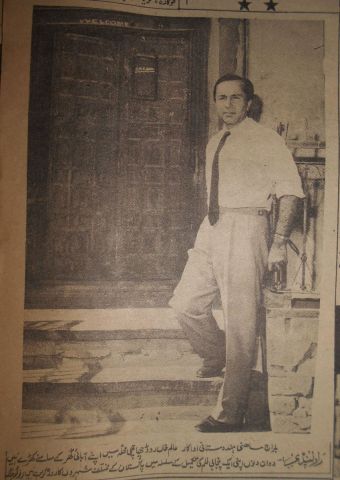
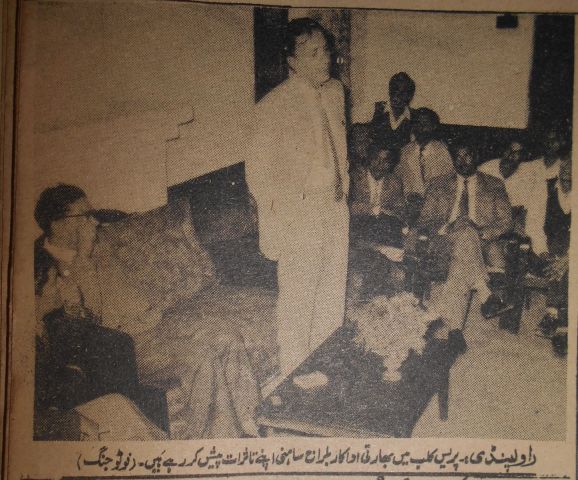
Geeta Rathore argues that the partition of India can be understood in two ways – 'partition as political fact', and 'partition as violence'. Partition as political fact depicts the dominant discourse on Partition historiography, which deals with grand narratives of the political fact of division. Garm Hawa is a cinematic experience of 'partition as psychological violence' which deals with the often neglected subject of 'violence'. Many Partition films focus on the plight of Punjabi Hindus and Sikhs , but Garm Hawa focuses on issues faced by the Muslim community ‒ their new relationship with the majority faith and the state, the tests of loyalty their members frequently undergo, and the constant threat of political and economic dis-enfranchisement. Nandini Ramnath believes that Garm Hawa is a fine rediscovery of the storytelling techniques that were fashionable in the seventies ‒ the use of actual locations, dramatic close-ups, naturalistic performances and nuanced characterisation.
Much of the team of film Garm Hawa had their roots in the Indian People's Theatre Association, better known as IPTA, once a hugely popular cultural adjunct of the Communist Party of India. A confident Balraj Sahni (Salim Mirza) with a stick in hand, Achkan and Karakuli topi appears on the poster of the movie, Garm Hawa. In 2015, Garm Hawa was resuscitated theatrically and again brought into debate on mainstream media. There are many similarities of Mirza Salim and Balraj Sahni in real life - both witnessed migration, suffered Partition trauma. The film was shot in Agra which is similar to Rawalpindi's down-town area where Balraj Sahni spent his childhood and youth. Balraj Sahni was deeply inspired by Pakistani Punjabi movie Kartar Singh. According to Balraj Sahni movies made in India did not depict the culture and art of Punjab. Movies like Kartar Singh had done a great favor not only to eastern and western Punjab but to the whole India. It is probable that this pushed him to make a movie in Punjabi on Partition for which he visited Pakistan. It became his literary visit as he attended many literary gatherings with Punjabi writers, rather than meeting anyone from the Pakistani film industry.
''Balraj Sahni and I were in the theatre together. I had worked for his Juhu Art Theatre and he was also in IPTA. He acted in my play – Aakhri Shama as Ghalib. There was a close association in a way and I admire his capability. Ideologically also, he was one with us. All these things helped. It was automatic for me to think of him as the lead person in the film.''
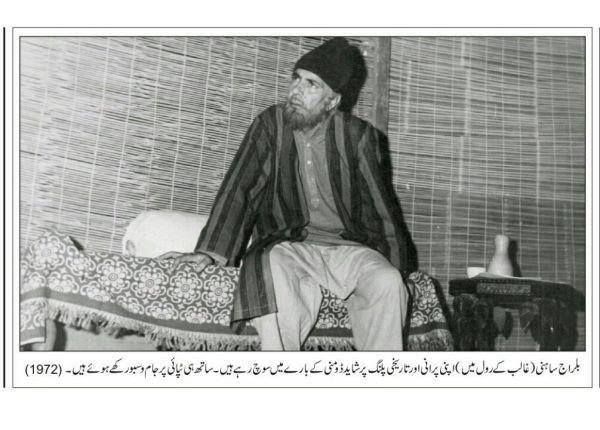
Garm Hawa shifted the focus to the shared sufferings and emotions that Partition brought to the common people rather than grand political narratives. Unlike other forms, the subject of Partition was carefully and sparingly addressed in cinema—both in India and Pakistan. Being witness to the events of Partition and riots the culminated to the escape of Sahni family out from Rawalpindi added to Balraj Sahni's performance. Somewhere he would have thought and found his own story while shooting and pronouncing dialogues of Garm Hawa. At a time when both Pakistan and India are losing Partition survivors with the passage of time specially in these times of pandemic, there are hundreds of such real life stories that can provide material for films on Partition. Like Garm Hawa, they can provide insights into the least explored aspects and narratives of Partition.
Notes:
1- Balraj Sahni interview ( Hindi Aur Urdu Filmein ) published in Monthly Shama ,Delhi 1961 translated by Yasir Abbasi
2- Daily Jang, Rawalpindi,17 October 1962
3- Daily Imroze, Lahore, 15 October 1962
4- Mera Pakistani Safarnama, (Gurmukhi) Published 2013, Arsee Publishers ,Chandni Chowk, Delhi-110006
5- Balraj, My Brother by Bhisham Sahni, Published by National Book Trust New Delhi ,1981
6- Balraj Sahni, An Autobiography by Balraj Sahni (English Translation). http://apnaorg.com/books/english/balraj-sahni/book.php?fldr=book
7- M.S. Sathyu's interview with Sidharth Bhatia. https://thewire.in/film/garm-hava-gave-space-for-indian-muslims-in-mainstream-films-m-s-sathyu
8- 'Garm Hava' brings back the Indian New Wave to where it belongs: the cinema by Nandini Ramnath
https://scroll.in/article/689553/this-week-garm-hava-brings-back-the-indian-new-wave-to-where-it-belongs-the-cinema
9- Restored classic 'Garm Hava' will blow back into theatres on November 14 by Nandini Ramnath
https://scroll.in/article/686195/restored-classic-garm-hava-will-blow-back-into-theatres-on-november-14
10- Daily Imroze, 16 October, 1962
11- Portrayal of Partition in Pakistani Cinema by Huma Sadaf https://www.sahapedia.org/portrayal-partition-pakistani-cinema
12 - Partition Literature and Cinema, A Critical Introduction ,Routledge 2020
13 - Portrayal of Partition in Hindi Cinema by Manoj Sharma , Journal of Indian History Congress,2009
https://www.jstor.org/stable/44147759?refreqid=excelsior%3Aed95e1978353e56476dda29db88ac088&seq=1
14 - Critical Analysis Of Garm Hava: The Ambivalent Identity Of Indian Muslims by Geeta Rathore
https://feminisminindia.com/2020/09/24/garm-hawa-ms-sathyu-film-analysis-muslim-identities/
Tags
About the Author
Ammad Ali is a freelance journalist, historian and travel writer. He has extensively write on Hindu, Sikh and Zoroastrian heritage of Pakistan.In 2013 he explored the house of Balraj Sahni in Rawalpindi. Since then he has been interested to know more about Balraj Sahni's life and art.




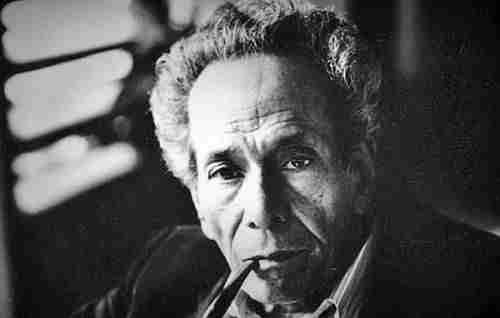
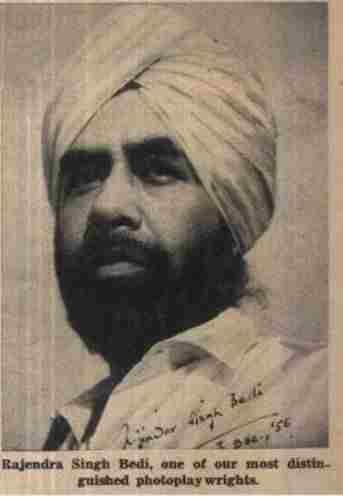
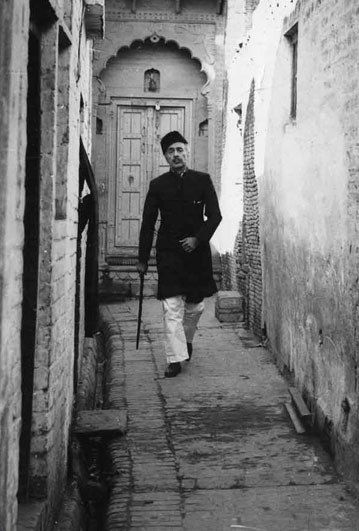

.jpg)


